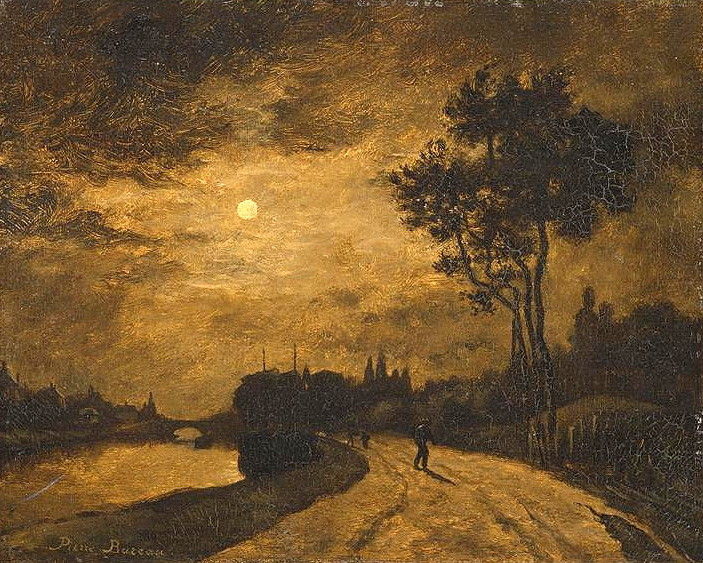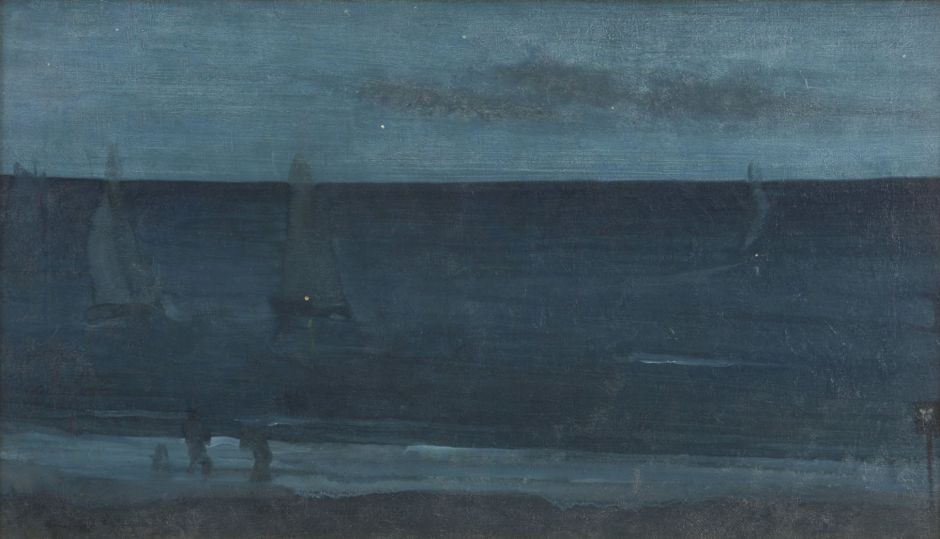It’s extremely unusual for any painter to abandon the use of multiple colours and create a completely monochrome finished painting. Using a limited range of colours, perhaps with only one or two additional hues for effect, is far more common, and for some artists quite normal. This article shows some examples of paintings which are more or less completely monochrome.
Monochrome underpainting has been common practice, usually in what’s known as grisaille, shades of grey which are used to determine the tone of each passage of the finished painting.

Jan van Eyck’s The Annunciation Diptych (c 1433-35) probably started from the concept of a grisaille, and ended up as three-dimensional as any sculpture. Other examples from this period sometimes add a little colour for an air of realism, but here van Eyck appears to have avoided that temptation.

Grisaille was also popular on the outside of polyptychs that could be folded. The exterior of Hieronymus Bosch’s masterwork The Garden of Earthly Delights (c 1495-1505) is a good example. This shows a portion of the earth within an orb, at the end of the third day of creation according to the account in Genesis: the land has been separated from water, and plants have started to develop and grow. At the top left is a miniature showing God the Father, apparently based on a contemporary engraving.

Some of the early masters of chiaroscuro, such as Georges de La Tour, also painted in what’s almost completely a single earth colour, here in his Penitent Mary Magdalen (1628-45).

During the Dutch Golden Age artists like Aert van der Neer came to specialise in nocturnes lit only by the moon and fire. Among his paintings is this undated Estuary Landscape by Moonlight, which uses light from both sources to great effect. Landscape details are shown largely in silhouette, and lack internal detail except in the group gathered around the fire in the foreground.
Van der Neer is exceptionally faithful to reality in this monochrome, the result of the severely impaired colour vision we all suffer in conditions of low light, when there’s insufficient to enable colour vision using the cone cells in the human retina.

A similar treatment is seen in Pierre-Isidore Bureau’s Moonlight on the Banks of the Oise, painted around two centuries later in 1867. This artist associated with the French Impressionists, and this was one of his paintings shown in the First Impressionist Exhibition.

Gustave Doré revived grisaille painting for three works he made immediately after the Franco-Prussian War, including The Enigma (souvenirs de 1870). This shows the shattered and still-burning remains of the city of Paris in the background, bodies of some of the Prussian artillery in the foreground, and two mythical beasts silhouetted in an embrace.
At the same time, the American painter James Abbott McNeill Whistler was painting his characteristic monochrome landscapes.

Whistler’s Nocturne: Blue and Silver — Bognor from the period 1871-76 is perhaps the most monochrome of them all. This might appear to be a small pochade sketch made in front of the motif, but its canvas is considerably larger and may well not have been started until the artist was back in the studio.
Monochrome figurative paintings were also revived in the latter half of the nineteenth century.

Valentine Cameron Prinsep’s Home from Gleaning shows a group of women who have been out salvaging cut cereal after the harvest has been brought in, and is almost perfectly monochromatic even in their faces.

Among the Nabis, it was the painting of Paul Ranson that was the most restricted in its range of colours. His Two Girls Next to the Head of Orpheus from about 1894 comes closest to being based on a single colour.

Just before the turn of the century in 1895, one of its greatest realist painters, Jean-Léon Gérôme, painted a series of eight works in grisaille, telling stories from the Bible. One of the few survivors from these is The Disobedient Prophet, which tells an obscure story from the first book of Kings (chapter 13) in the Old Testament.
Following Jeroboam’s idolatry at Bethel, God commands that no one shall eat bread or drink water there, and must not return by the way that they came. When a prophet disobeys God’s command, he is given to a lion, which kills him and leaves his body on the road, with his donkey unharmed beside him. He is found there, as shown in this painting.
I sometimes think of grisaille as showing a finished painting in its underwear, before its richly coloured clothes have covered it. In these cases, artists have demonstrated how effective it can be in the right circumstances.

